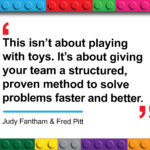Ten years ago this month, we lost one of the most innovative communications thinkers in the world, a man who profoundly affected the world of politics and advertising.
“’Media consultant’ is barely adequate to describe Mr. Schwartz’s portfolio,” The New York Times obituary of Tony Schwartz noted. “In a career of more than half a century, he was an art director; advertising executive; urban folklorist (in one project, capturing the cacophony of New York streets on phonograph records); radio host; Broadway sound designer; college professor; media theorist; author; and maker of commercials for products, candidates and causes.
“What was more, Mr. Schwartz, who had suffered from agoraphobia since the age of 13, accomplished most of these things entirely within his Manhattan home.”
By the time I heard of Tony Schwartz, he had already been canonized by many of the American political professionals I had come to know through Campaigns & Elections conferences in Washington, DC., conferences that offered practical seminars such as Damage Control: Once it’s too late, now what?, Running a Woman Candidate: A How-To, Interviewing with Authority: Practical Tips on Controlling the Situation and the ever popular, How to Knife your Opposition in the Back.
Schwartz changed political communications and advertising forever when he created what is still considered to be the most effective political ad in history, the Daisy ad produced for Lyndon B. Johnson in the 1964 Johnson/Goldwater presidential race.
In the ad, a little girl begins to count down from ten as she plucks the petals from a daisy. A deep, male voice takes over the countdown. The camera zooms in on the child’s eye and reflected in her pupil is an exploding mushroom cloud as we hear the sound of an explosion. President Johnson’s voice continues the narration:
“These are the stakes. To make a world in which all of God’s children can live, or to go into the dark. We must either love each other, or we must die.”
The line is from a poem W. H. Auden wrote at the beginning of World War II.
“Though the name of Johnson’s opponent, Senator Barry M. Goldwater, was never mentioned,” the New York Times wrote, “Goldwater’s campaign objected strenuously to the ad. So did many members of the public, Republicans and Democrats alike. The spot was pulled from the air after a single commercial, though it was soon repeated on news broadcasts. It had done its work: with its dire implications about Goldwater and nuclear responsibility, the daisy ad was credited with contributing to Johnson’s landslide victory at the polls in November.”
Tony Schwartz went on to create dozens of ads for politicians including Jimmy Carter and Bill Clinton and created thousands more for commercial clients. He was the first adman to use the voices of real children instead of adult actors mimicking children.
Schwartz’s 1973 book, The Responsive Chord broke new ground in advertising and communications. His idea that effective communications don’t drive home a message. Rather, through words, images and especially sounds, effective communications arouses something already existing in the recipient, a thought, an emotion, a memory. (Schwartz spent a lifetime recording the sounds of Manhattan.)
As a communications specialist, I learned from Tony Schwartz that you must awaken something in the person you are trying to reach not try to get a message across. That idea—nuanced and powerful—affected every campaign I’ve done since.
In 2001 I heard Tony Schwartz speak in response to receiving a lifetime achievement award from Campaigns & Elections. In the Washington, D.C. ballroom 500 political professionals representing organizations as diverse as the NRA, the Miami Dade Police Union, NOW and AARP sat with rapt attention, their eyes misty in reverence as Tony Schwartz graciously accepted the award—by telephone, from Manhattan. His life-long agoraphobia had rendered him housebound to the island of Manhattan.
Schwartz passed away on June 15, 2008. He was 84.
Learn to strike your own responsive chord at http://www.tonyschwartz.org.
You can contact Gail Picco at gpicco@localhost.






